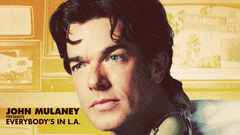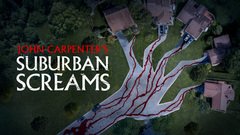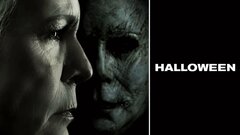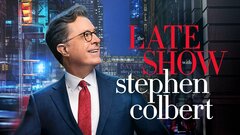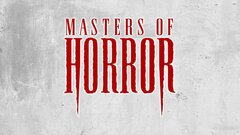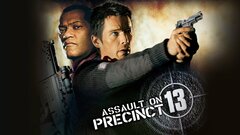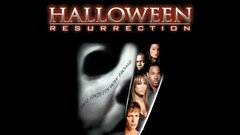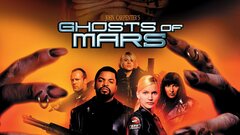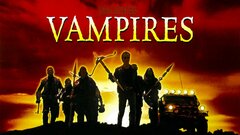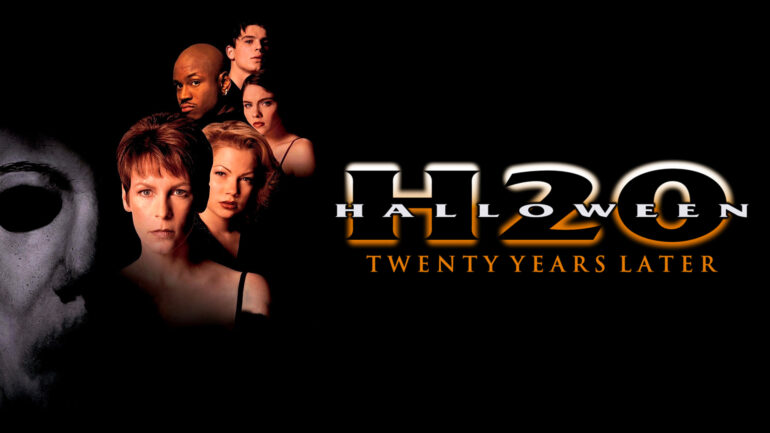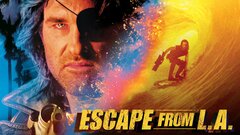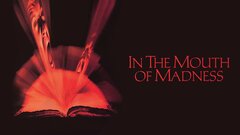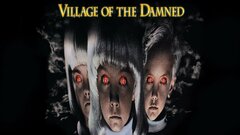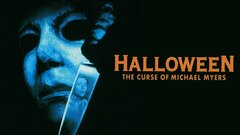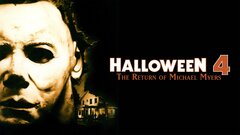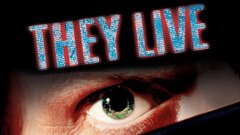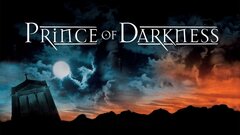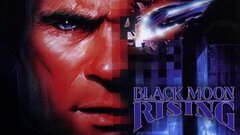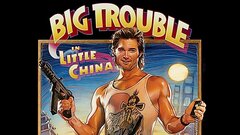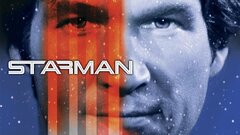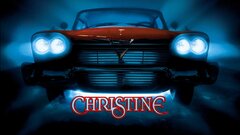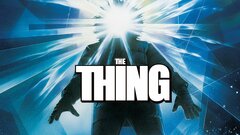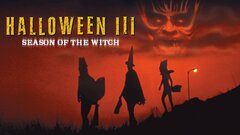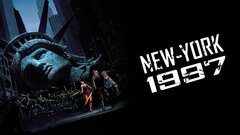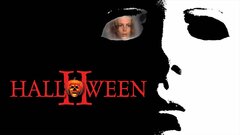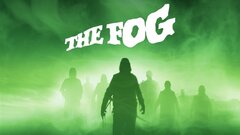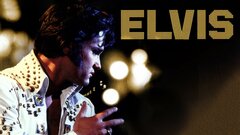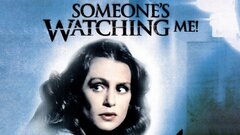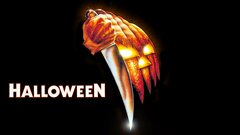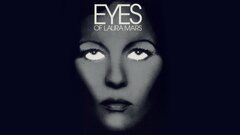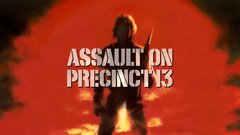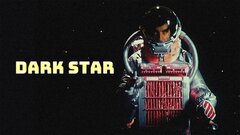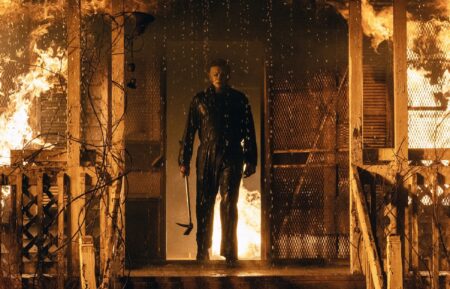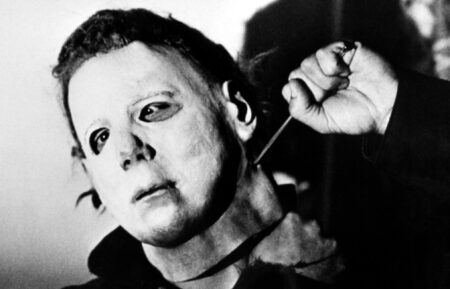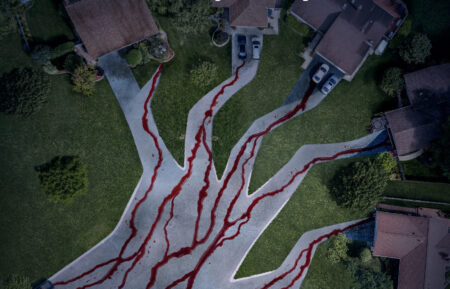For most of his life, John Carpenter had been directing films. Surrounded by artistic influences ever since he was young - his father was an accomplished violinist and his mother routinely took him to movies - Carpenter naturally made the transition from childhood experimenter, to film student, to finally, professional director.
Unexpected, however, was his making one the most important horror films ever in "Halloween" (1978), a chilling tale of a serial killer terrorizing a small town that was shot for a mere $300,000 and became one of the most profitable films of all time. Without stars, special effects or visible gore - there was nary a drop of blood on screen - "Halloween" launched Carpenter's career, while spawning untold numbers of imitators, no less than six direct sequels, and one (awful) remake.
Though he went on to direct other seminal films - "Escape from New York" (1981), "Christine" (1983) and "Big Trouble In Little China" (1986) - Carpenter was forever remembered for creating a new horror subgenre - the slasher flick - that has often been imitated, but never duplicated.
Born on Jan. 16, 1948 in Carthage, NY, Carpenter was drawn to filmmaking by repeated viewings of "It Came From Outer Space" (1953) and "Forbidden Planet" (1956), thanks to his mother who routinely took the young lad to the movies. His father, meanwhile, was a music director at Western Kentucky University, sparking his son's interest in playing violin. But Carpenter was more adept at playing bass, eventually becoming good enough to play in a teenage band that did USO shows in Europe. His true passion, however, was making films.
As a youth, Carpenter ran around with an 8mm Eumig camera given to him by his dad and made "really bad" short films with names like "Gorgo vs. Godzilla" and "Sorcerer from Outer Space." After high school, Carpenter spent two years at Western Kentucky where his dad taught, but later transferred to the University of Southern California, becoming part of the School of Cinema; just missing an opportunity to learn alongside the likes of Francis Ford Coppola and George Lucas.
While a graduate student at the USC, Carpenter was the writer, editor and composer on the Oscar-winning short, "The Resurrection of Bronco Billy" (1969). The next year, he worked with classmate Dan O'Bannon (later of "Alien" fame) on the sci-fi black comedy "Dark Star," his memorable master's thesis that he expanded into his first feature in 1974. Shot on a budget of only $60,000, the film offered a witty, yet bleak alternative to Stanley Kubrick's high-minded "2001: A Space Odyssey, in its vision of man in space overwhelmed by technology. British culture magazine Time Out proclaimed it "arguably the last great hippy movie with its jokey references to drugs, the absurd and California surfing...." Described by Carpenter as "'Waiting for Godot' in space," "Dark Star" alerted genre fans of the arrival of a distinctive new sensibility that was smart, playful and technically assured. Though well received at the 1974 Filmex, "Dark Star" was mishandled by several different distributors and failed at the box office. Its cult status was attained only after becoming popular on the college circuit in the late 1970s.
With no directing offers forthcoming, Carpenter turned to writing screenplays with some degree of success. He sold a script called "Eyes " to Columbia, "Blood River" to John Wayne's Batjac Productions and "Black Moon Rising" to producer Harry Gittes. "Eyes" metamorphosed into Irvin Kershner's "The Eyes of Laura Mars" (1978), starring Faye Dunaway; "Blood River" later galloped onto the small screen as a 1991 CBS Western telefilm starring the unlikely trio of Rick Schroder, Wilford Brimley and Adrienne Barbeau; and "Black Moon Rising" eventually became a forgettable 1986 caper film starring Tommy Lee Jones and Linda Hamilton.
Carpenter enhanced his reputation with the remarkable exploitation flick "Assault on Precinct 13" (1976), for which he also composed the catchy minimalist score. "Assault" ingeniously mixed Howard Hawks' "Rio Bravo," George Romero's "Night of the Living Dead" and film history references galore to create a deliciously stressful exercise in screen suspense. Though a failure at the box office, the film helped establish Carpenter with European cineastes fond of tough American auteurs. A last-minute addition to the London Film Festival in December 1977, the film garnered a huge audience response. London critics anointed Carpenter the major new "find" of the festival. Unfortunately, this critical success did not translate into directing offers, forcing Carpenter to resume screenwriting-for-hire with "Escape" for 20th Century-Fox and "High Rise" and "Prey" for Warner Brothers. Of the three - only "High Rise" was subsequently produced (as the superior 1978 NBC telefilm, "Someone's Watching Me!").
Producer Irwin Yablans - whose Turtle Releasing distributed "Assault on Precinct 13" - attended the successful London screening. Then setting up a new production company, Compass International, he offered Carpenter a chance to direct a feature. The project was to be a thriller based on a concept by Yablans called "The Babysitter Murders." The struggling writer-director thought the idea might prove commercial and thus, "Halloween" came to pass - an enormously influential and successful slasher flick that introduced Jamie Lee Curtis to the world and helped establish the grammar and thematic preoccupations of a new horror subgenre. Alongside his most celebrated film score, Carpenter skillfully employed a gliding Steadicam that unexpectedly turned elegant tracking sequences into menacing point-of-view shots. Having more in common with a carnival funhouse than the charnel house air of many of its would-be imitators, the film tantalized with the possibility of cheap thrills on the periphery of each carefully composed widescreen frame. Produced by co-writer Debra Hill, "Halloween" reportedly grossed over $75 million worldwide, making it one of the most profitable films ever made.
The success of "Halloween" launched a series of inferior sequels (directed by others), as well as Carpenter's entry into mainstream Hollywood production. The Los Angeles Film Critics Association hailed Carpenter with the 1979 New Generation Award for "Dark Star," "Assault on Precinct 13" and "Halloween." Flush with this success, Carpenter began working in TV during the late '70s, starting with co-scripting the innocuous teen romance "Zuma Beach" (NBC, 1978). He strutted his stuff a few months later as writer-director of NBC's "Someone's Watching Me!," a dazzling suspenser starring Lauren Hutton as a career woman being preyed upon by an unseen voyeuristic neighbor. With a nod to Hitchcock's "Rear Window," Carpenter achieved his claustrophobic effects with subtle framing and deep focus compositions. He gained more attention and kudos with "Elvis" (ABC, 1979), a three-hour biopic starring Kurt Russell as the legendary rocker. A trimmed version was released theatrically overseas.
Once a leading contender to become modern Hollywood's version of the old genre master Hawks, Carpenter - since moving into bigger-budget productions - found his stylistic strengths and modest thematic interests (e.g. issues of communication and isolation; questioning authority) being sometimes smothered by an excess of production values or poorly served by inadequate scripting. Even a relatively early and low-budget outing like "Escape From New York" (1981) soon dropped its intriguing premise to settle for the conventional heroics required by the plot. Similarly, in "The Thing" (the first film over which Carpenter did not have contractual control), Rob Bottin's impressive special effects stole the spotlight from an ostensibly humanist theme.
"Christine" began as a promising exploration of America's automobile fetish and its relationship to male youth culture only to dissolve into a spectacle of the eponymous car's several physical metamorphoses and murderous rampages. "Starman" (1984) attempted to retell "E.T. The Extra-Terrestrial" as an adult love story. Neither Jeff Bridges' Oscar-nominated performance as an amorous alien nor his peculiar, but engaging chemistry with leading lady Karen Allen was sufficient to overcome the sketchy and derivative screenplay, serving as a reminder that characterization was one of Carpenter's weaknesses as a filmmaker. "Big Trouble in Little China" was a lavish but uneven homage to supernatural Hong Kong action flicks. Memorable for Kurt Russell's broad spoof of John Wayne and for a deftly edited kidnapping sequence, the film eventually succumbed to an overdose of special effects. The commercial and critical failure of this project sent Carpenter temporarily back to the world of low-budget filmmaking.
He next directed "Prince of Darkness" (1987), a likeably goofy return to low-budget horror and a knowing tribute to the works of British fantasy screenwriter Nigel Kneale (best known for the "Quatermass" films). Absurd but compelling, the film told the story of Satan's return to Earth couched in the terminology of technological sci-fi. "They Live" (1988) presented professional wrestler Roddy Piper in an initially subversive consideration of the dark underpinnings of the "Reagan revolution" before degenerating into all-too-familiar fisticuffs and shoot-outs. Nonetheless, budget restrictions seemed to reawaken some quality that had been fading in Carpenter's filmmaking. Shorn of production bloat, his films had again become fairly dependable, if unambitious, fun.
The $40 million "Memoirs of an Invisible Man" (1992) boasted state-of-the-art invisibility effects from Industrial Light and Magic but was undermined by poor casting - it was a Chevy Chase vehicle - and an indecisive tone. Carpenter briefly returned to the small screen as executive producer, segment director, composer and host of "John Carpenter Presents Body Bags" (Showtime, 1993), a horror anthology telefilm. Playing a ghoulish, pun-happy morgue attendant, Carpenter introduced three horrific stories: "Gas Station," "Hair" and "Eye." He helmed the first two, while Tobe Hooper directed the third. The effort was generally deemed well-crafted but uninspired. "In the Mouth of Madness" (1995) was an enormously entertaining trifle about a skeptical insurance investigator (Sam Neill) pursuing a hugely successful horror writer, whose books literally create a world of their own. The film benefited from a terrific cast that also included David Warner, Charlton Heston, Jurgen Prochnow and John Glover. The film's pleasures were undercut by an annoyingly obscure last third and a silly ending. Carpenter's remake of one of the beloved films of his youth, "Village of the Damned" (1995) opened to mixed reviews and tepid box office.
The sequel that no one demanded, "John Carpenter's Escape From L.A." (1996), arrived 15 years after its predecessor on a wave of hype. Carpenter, Kurt Russell and Debra Hill collaborated on the screenplay and Hill produced. Though a stylized cipher, "Escape from New York" character Snake Plissken may have been the most memorable character in all of Carpenter's films. Russell was still convincing in black leather as the reluctant mercenary sent into a nightmarish futuristic Los Angeles, where the terminally politically incorrect are consigned. Though budgeted at $50 million, the film was deemed "cheesy" and "crappy" by much of the press, but these words were delivered with affection. The cast featured such exploitation icons as Peter Fonda, Bruce Campbell and Pam Grier and the film opened to healthy box office.
By the mid-1990s, John Carpenter was a hardy survivor of the vicissitudes of the movie business. One of the few young genre auteurs of the 1970s to continue to work in genre fare (unlike David Cronenberg) - and work regularly (unlike George Romero and Tobe Hooper), he has remained busy producing, helming and penning works for film and TV.
Carpenter had difficulty, however, rediscovering and packaging his strengths in a modern commercial cinema that encouraged the presentation of action as overblown visual spectacle. A consummate craftsman, Carpenter delivered solid entertainments that always boasted at least a few outstanding sequences. Unfortunately, while his career continued, there was little evidence of artistic growth. Carpenter's name figured prominently in advertising as a brand-name assurance of a certain level of quality, but he had clearly failed to live up to the promise of his early work.
As the 1990s came to a close, it became apparent that Carpenter was more content with living off past successes rather than breaking new artistic ground. He began directing films with his name directly in the title, like "John Carpenter's Vampires" (1998) and "John Carpenter's Ghost of Mars" (2001) - both of which failed to benefit from this new approach.
While "Vampires" - a mildly entertaining, though one-dimensional horror-western about an ill-fated band of vampire hunters - pulled in over $20 million at the box office, "Ghost of Mars" - a futuristic sci-fi thriller about the discovery of an ancient civilization on Mars - failed to make it past $10 million, signaling perhaps Carpenter's fading influence with the masses. Meanwhile, former musical front man Rob Zombie directed the remake of Carpenter's original "Halloween" in 2007, turning the horror classic into a muddy, bloody and pointless mess. Carpenter nonetheless served as a consulting producer.

